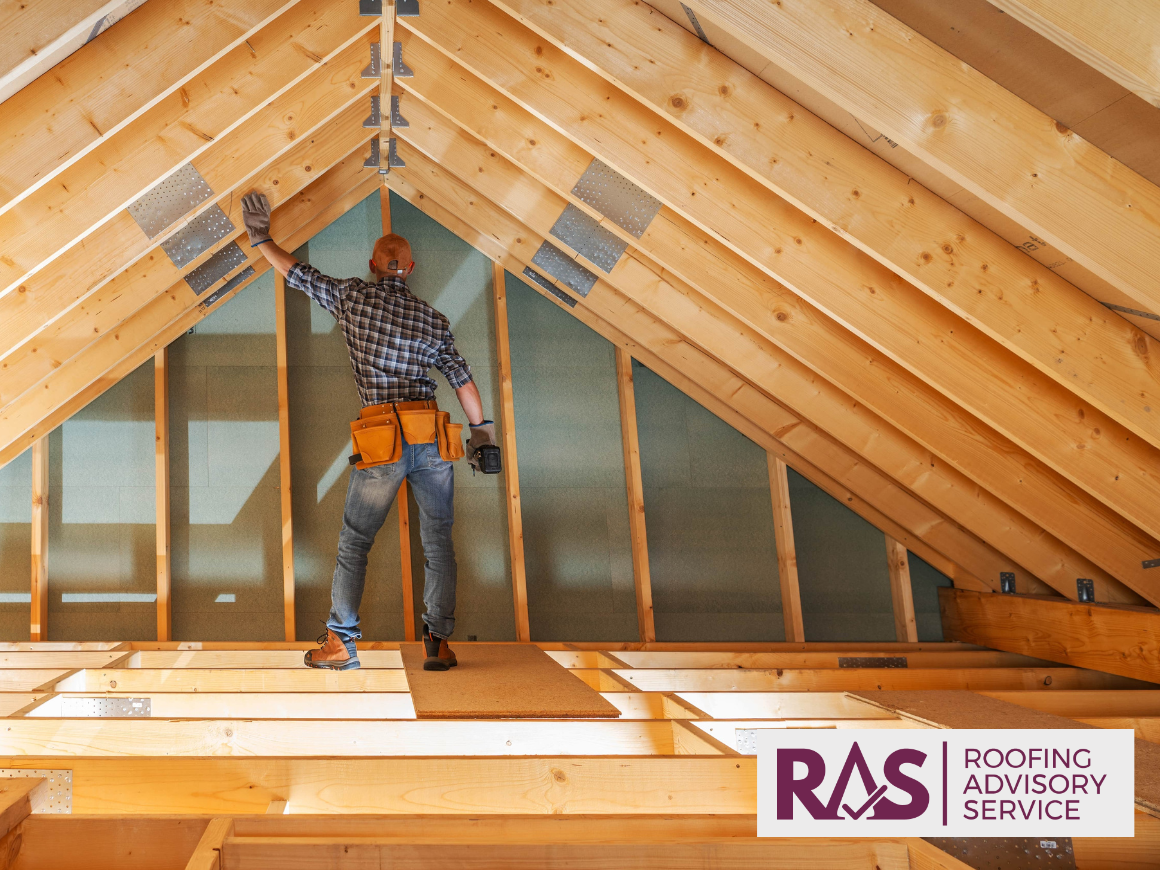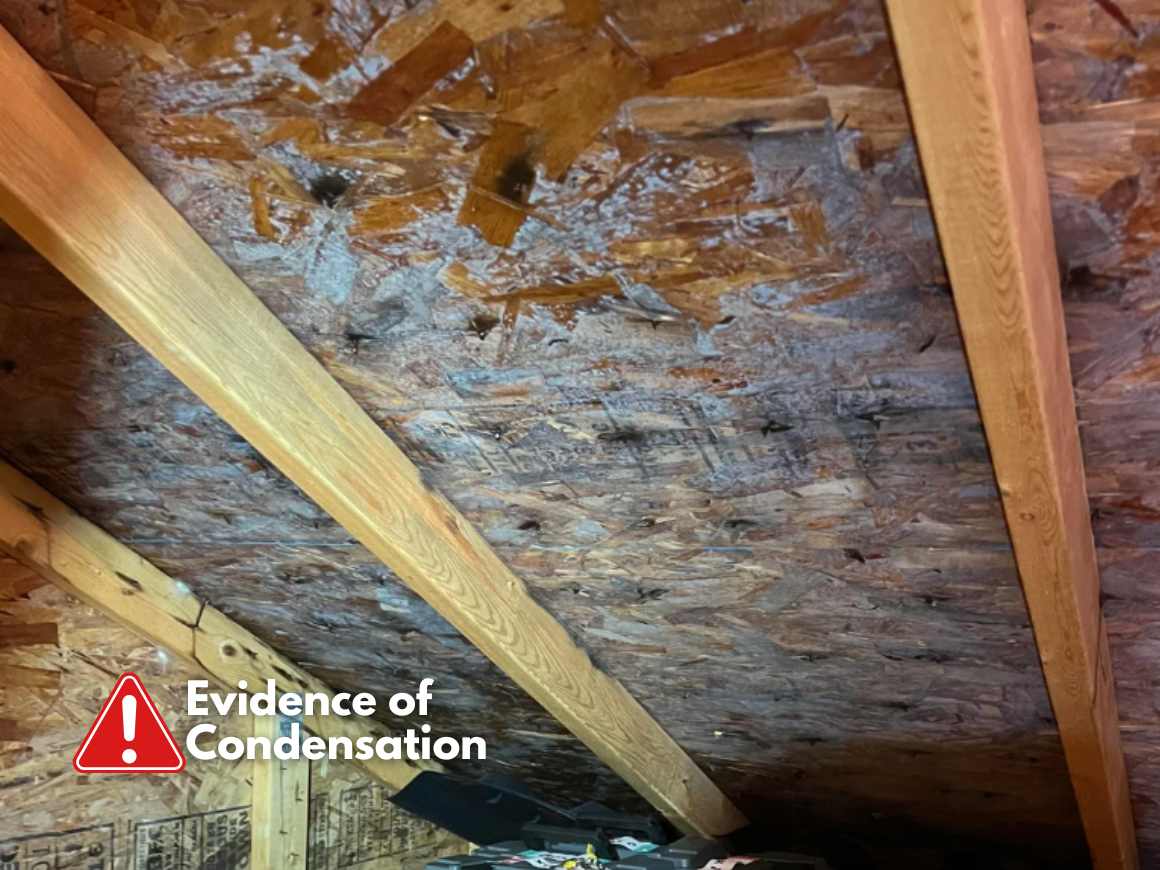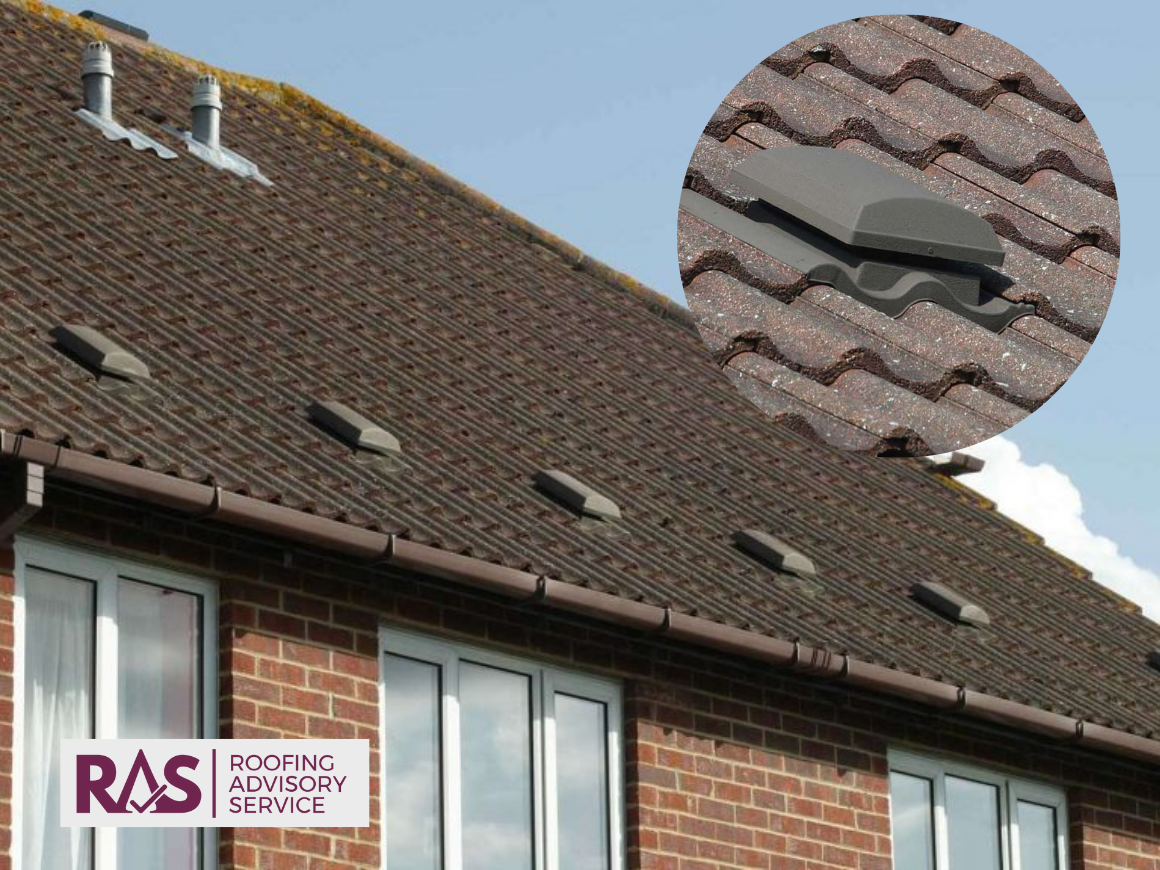Is Your Roof Hiding A Moisture Problem?
Homes Built Before 2004 in Scotland May Be at Risk of Interstitial Condensation — Without You Knowing
If your home was built before 2004, there is a high chance that it lacks proper attic ventilation. Without it, warm, moist air rising from your home can become trapped in the roof space, leading to a hidden but serious issue known as interstitial condensation.
This form of condensation doesn’t form on windows or walls. Instead, it builds up inside your roof structure, where it can go undetected for years, silently rotting timber, damaging insulation, and reducing your roof’s lifespan.


Poor Ventilation Can Halve the Lifespan of Your Roof
If your roof lacks proper ventilation, especially in homes with older insulation, such as fibreglass, the risk of interstitial condensation significantly increases, which can cut the lifespan of your roof by up to 30–50%.
Here’s what that means in real terms:
-
A well-built, ventilated roof can last 40–50 years or more.
-
Without ventilation, moisture buildup can start causing rot and degradation in as little as 10–15 years, particularly in timber elements such as rafters, joists, and battens.
-
This can reduce the effective lifespan of your roof to 20–30 years, depending on conditions and materials used.
So if your home was built before 2004 and doesn’t have modern ventilation, there’s a real risk that your roof might already be halfway through its life, even if it appears fine from the outside.

Understanding Interstitial Condensation
Interstitial condensation is a form of moisture build-up that occurs inside the structure of your roof — not on visible surfaces. It happens when warm, humid air from your living spaces rises into an unventilated or poorly ventilated attic. With nowhere to escape, this air cools rapidly when it meets the colder surfaces of your roof, turning into moisture. Unlike surface condensation, this hidden dampness seeps into your insulation and timber framework.
Left untreated, interstitial condensation can cause extensive damage without being noticed: damp patches begin to appear, mould takes hold, insulation loses its effectiveness, and timber structures start to rot. Over time, it can drive up your heating bills and lead to costly roof repairs or even full replacements.

Councils Have Already Taken Action — But Private Homeowners Were Left Out
Local councils across Scotland have spent millions retrofitting their housing stock with proper roof ventilation to mitigate the risk of new roof installations.
Private homeowners, however, were not informed or supported, and that’s where we step in.
How Roof Ventilation Affects Indoor Air Quality
When warm, moist air gets trapped in an unventilated attic, it can also lead to damp and mould growth that seeps back into the home’s living areas.
This can:
Release mould spores and musty odours into the air
Aggravate respiratory conditions such as COPD, asthma, or chronic bronchitis

Free Roof Ventilation & Moisture Assessments
If you think you may be affected, the Roofing Advisory Service offers free attic assessments for homeowners in Scotland.
What’s Included:
-
Digital testing to detect moisture levels in your attic space
-
A projected roof lifespan estimate
-
Advice on whether a ventilation retrofit is needed
- Price Estimates
-
Access to trusted local tradespeople if work is recommended
- Emailed Report

Why Act Now?
By the time visible damp appears, interstitial condensation has often already caused long-term damage.
Taking action now could help you:
-
✅ Extend your roof’s lifespan by 10–20 years
-
✅ Avoid £5,000–£12,000 in future roof repair costs
-
✅ Improve home comfort and indoor air quality
-
✅ Save up to 25% on your annual heating bills
Book Your Free Assessment Today

Maintain the roof over your head
If your roof lacks proper ventilation, especially in homes with older insulation like fibreglass, the risk of interstitial condensation is significantly increased.
